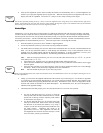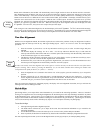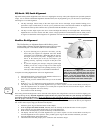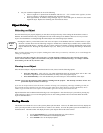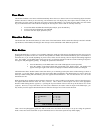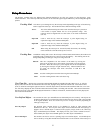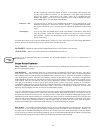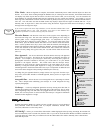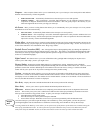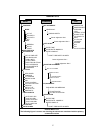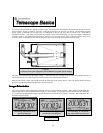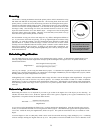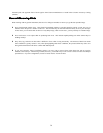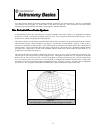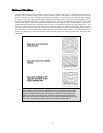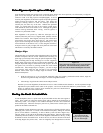
26
Compass – These compass features allow you to automatically move your telescope to the north position and calibrate
north for increased accuracy of future alignments.
• Find Celestial North – Automatically finds and moves the telescope to its true north position.
• Calibrate Compass - After completing a successful GPS Alignment, use the Calibrate Compass feature to
compensate for magnetic declination errors and local anomalies. This will greatly improve the accuracy of your
initial star alignments the next time you align your telescope.
Alt Sensor - Here you have leveling features that allows you to automatically move your telescope to its level position
and calibrate level for increased accuracy.
• Move Alt Sensor - Automatically finds and moves the telescope to its level position.
• Calibrate Sensor– After completing a successful Altazimuth alignment this utility function calibrates the level
inside the GPS accessory with the actual position of the optical tube. This level position is then stored and used to
improve the accuracy of future Altazimuth alignments.
Wedge Align – The NexStar has two equatorial wedge alignment modes (one for the northern hemisphere and one for the
southern) that will help you polar align your telescope when using an optional equatorial wedge. See the Astronomy Basics
section of the manual for more information on the Wedge Align feature.
Periodic Error Correction (PEC) - PEC is designed to improve photographic quality by reducing the amplitude of
the worm gear errors and improving the tracking accuracy of the drive. This feature is for advanced astrophotography and is
used when your telescope is polar aligned with the optional equatorial wedge. For more information on using PEC, see the
section on “Celestial Photography”.
Light Control – This feature allows you to turn off both the red key pad light and LCD display for daytime use to
conserve power and to help preserve your night vision.
Factory Setting – Returns the NexStar hand control to its original factory setting. Parameters such as backlash
compensation values, initial date and time, longitude/latitude along with slew and filter limits will be reset. However, stored
parameters such as PEC and user defined objects will remain saved even when Factory Settings is selected. The hand
control will ask you to press the "0" key before returning to the factory default setting.
Version - Selecting this option will allow you to see the current version number of the hand control, motor control and
GPS software. The first set of numbers indicate the hand control software version. For the motor control, the hand control
will display two sets of numbers; the first numbers are for azimuth and the second set are for altitude. On the second line of
the LCD, the GPS and serial bus versions are displayed.
Get Alt-Az - Displays the relative altitude and azimuth for the current position of the telescope.
Goto Alt-Az - Allows you to enter a specific altitude and azimuth position and slew to it.
Hibernate - Hibernate allows the NexStar to be completely powered down and still retain its alignment when turned
back on. This not only saves power, but is ideal for those that have their telescopes permanently mounted or leave their
telescope in one location for long periods of time. To place your telescope in Hibernate mode:
1. Select Hibernate from the Utility Menu.
2. Move the telescope to a desire position and press ENTER.
3. Power off the telescope. Remember to never move your telescope manually while in Hibernate mode.
Once the telescope is powered on again the display will read Wake Up. After pressing Enter you have the option of
scrolling through the time/site information to confirm the current setting. Press ENTER to wake up the telescope.
Pressing UNDO at the Wake Up screen allows you to explore many of the features of the hand control without waking the
telescope up from hibernate mode. To wake up the telescope after UNDO has been pressed, select Hibernate from the
Utility menu and press ENTER. Do not use the direction buttons to move the telescope while in hibernate mode.
H
H
e
e
l
l
p
p
f
f
u
u
l
l
H
H
i
i
n
n
t
t



